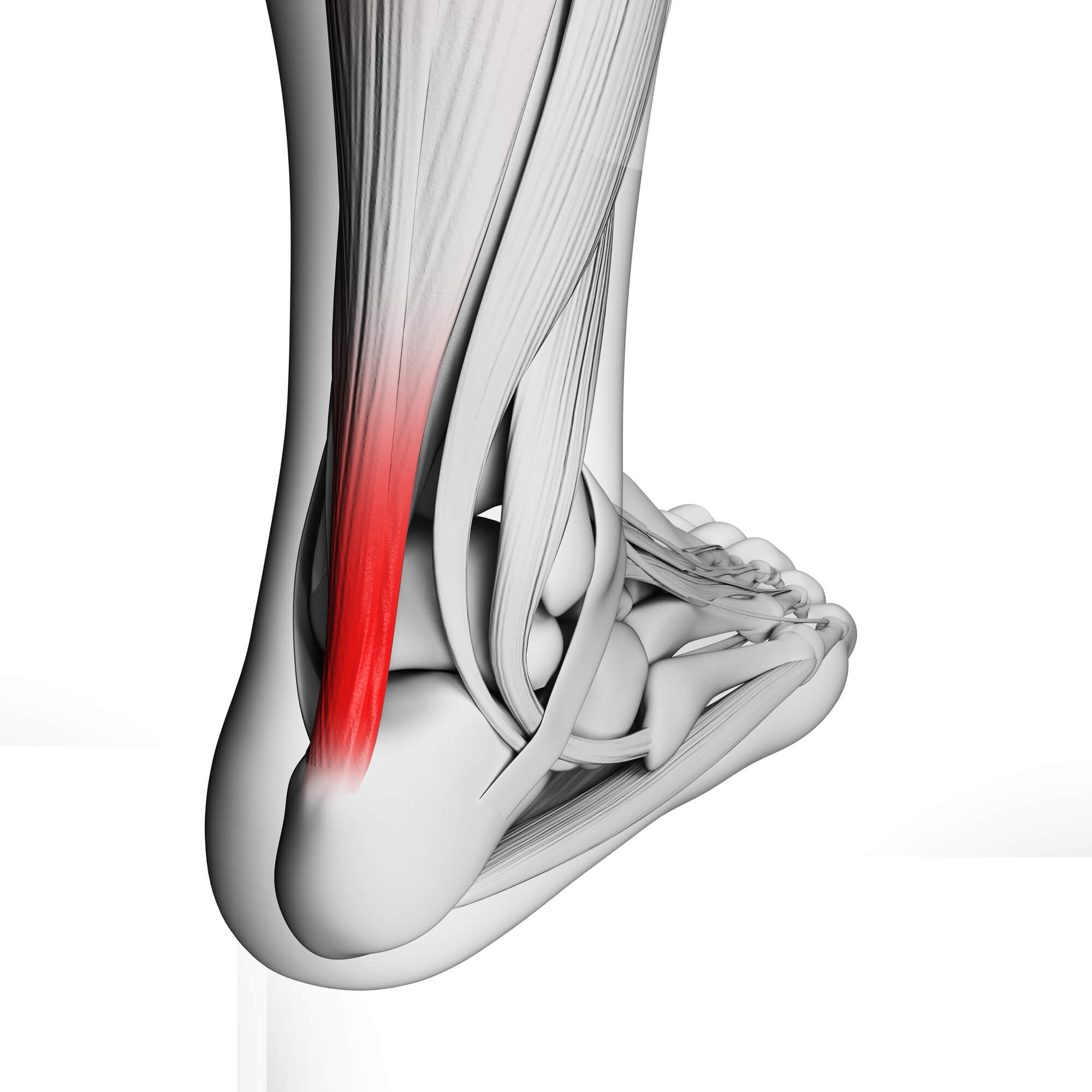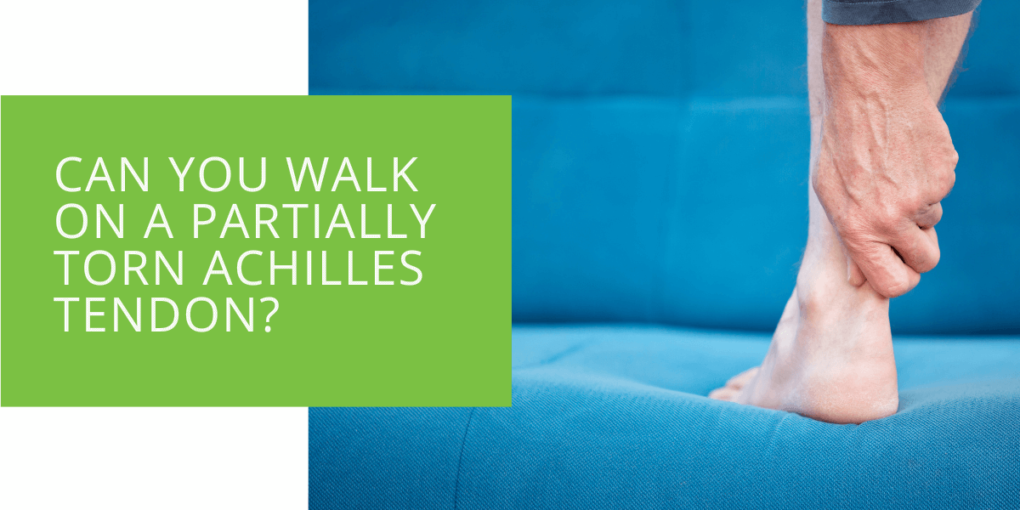Can You Walk on A Partially Torn Achilles Tendon?
The Achilles tendon is one of the most crucial structures in the human body. It connects the calf muscles to the heel bone and facilitates movement. Without it, walking, running, and jumping would be impossible. It is the largest and one of the strongest tendons in the body, and it acts as a powerful spring during physical activities. Despite its importance, this critical component is prone to injuries, with partial tears being one of the most common.
Walking with a partially torn Achilles tendon can be a daunting task. It can cause significant mobility challenges and may require specialized care. Understanding the critical role of the Achilles tendon in biomechanics is crucial before delving into its complexities. By doing so, we can appreciate the importance of caring for this structure and seeking professional help if we experience discomfort or injuries. So, let's dive deeper into the complexities of the Achilles tendon and understand how we can keep it healthy.
Key Takeaways
- Walking on a partially torn Achilles tendon depends on the severity of the injury, with mild tears allowing for limited mobility but not advisable and severe tears making walking extremely challenging.
- Treatment options for a partially torn Achilles tendon include conservative approaches like immobilization and physical therapy, as well as surgical intervention in more severe cases.
- Recovery from a partially torn Achilles tendon is a gradual process, and consulting an ankle specialist is essential for accurate diagnosis, treatment, and successful rehabilitation.
Achilles Tendon Rupture vs. Partial Tear
To navigate the question of whether you can walk with a partially torn Achilles tendon, it's essential to distinguish between a complete Achilles tendon rupture and a partial tear.
Achilles Tendon Rupture
An Achilles tendon rupture is a severe injury where the tendon completely snaps or tears apart. This type of injury demands immediate medical attention and often necessitates surgical intervention. Walking with a fully ruptured Achilles tendon is nearly impossible without external support or crutches.
Partially Torn Achilles Tendon
A partially torn Achilles tendon represents a less severe injury where only a portion of the tendon is damaged. The extent of the damage varies, and it is vital to recognize that this type of injury allows for differing degrees of mobility depending on the severity of the tear.
Understanding the key differences between a complete rupture and a partial tear is crucial for individuals dealing with Achilles tendon injuries. A complete rupture is a medical emergency, while a partial tear requires a comprehensive evaluation by a medical professional to determine the appropriate course of action. It's important to seek immediate medical attention to assess the injury's extent accurately.
Partially Torn Achilles Tendon Symptoms
Recognizing the symptoms of a partially torn Achilles tendon is pivotal in initiating timely treatment. These symptoms may manifest in various ways:
- Pain in the back of the ankle: Often described as a sharp or burning pain.
- Swelling and tenderness: Inflammation around the affected area, accompanied by tenderness to touch.
- Difficulty pointing your toes downward: Reduced range of motion due to tendon damage.
- Weakness in the affected leg: Decreased strength and stability.
- A noticeable lump or gap in the tendon: Visible irregularities compared to the healthy tendon.
If you experience these symptoms, you must promptly consult a foot and ankle specialist for a comprehensive evaluation.
Paying close attention to these symptoms is essential. The pain and swelling may vary in intensity, and the presence of a lump or gap in the Achilles tendon can indicate the extent of the damage. Ignoring these signs can lead to further complications and hinder the healing process.
Can You Still Walk with a Partially Torn Achilles Tendon?
The ability to walk with a partially torn Achilles tendon hinges on several factors, including the severity of the injury and your pain threshold.
Mild Partial Tear
Some individuals may retain limited mobility in cases of a mild partial tear, albeit with discomfort and a noticeable limp. However, it's important to note that attempting to walk on a partially torn Achilles tendon can exacerbate the injury and impede the healing process. Rest and immediate medical assessment are highly recommended.
Severe Partial Tear
With a more severe partial tear, walking becomes progressively challenging and painful. Trying to walk on a severely torn Achilles tendon is not advisable and can lead to further deterioration of the tendon, potentially requiring more invasive treatments.
The extent of the partial tear significantly influences mobility. In mild partial tears, individuals may instinctively attempt to walk through the pain, which can worsen the injury. On the other hand, those with a severe partial tear often find walking to be nearly impossible due to the substantial damage to the tendon fibers. To determine the appropriate course of action, seeking professional evaluation is crucial in both scenarios.

Treatment Options for Partially Torn Achilles Tendons
Dealing with a partially torn Achilles tendon necessitates exploring various treatment options to ensure optimal healing and minimize long-term complications.
Conservative Approaches
- Immobilization: For less severe cases, a podiatrist may recommend immobilizing the foot and ankle with a cast, walking boot, or brace. This restricts movement, allowing the tendon to heal without additional stress.
- Orthopedic Interventions: Orthopedic inserts or custom orthotics can be beneficial in redistributing weight and pressure away from the damaged area, promoting healing.
- Physical Therapy: Physical therapy is a cornerstone of rehabilitation. Therapists employ tailored exercise programs to strengthen calf muscles, improve flexibility, and restore normal foot and ankle function.
Surgical Intervention
In cases where conservative methods prove ineffective or if the partial tear is severe, surgical intervention may be the most appropriate course of action. Orthopedic surgeons have several surgical techniques at their disposal, tailored to each patient's specific needs.
The choice between conservative and surgical treatments is based on the individual's condition and the medical team's recommendations. Conservative approaches aim to support the body's natural healing processes, while surgery may be necessary to reattach and repair torn tendon fibers. The decision should be made in consultation with a healthcare professional.
Recovery and Rehabilitation
Recovery from a partially torn Achilles tendon is a gradual process that demands dedication and patience.
Recovery Time and Expectations
The recovery duration can vary significantly, from several weeks to several months. Several factors influence the recovery timeline, including the extent of the tear and adherence to treatment recommendations.
Physical Therapy and Rehabilitation
Physical therapy plays a pivotal role in Achilles tendon rehabilitation. Under the guidance of a skilled therapist, patients engage in tailored exercises aimed at:
- Strengthening calf muscles.
- Improving flexibility and range of motion.
- Restoring normal gait and walking mechanics.
Rehabilitation after a partially torn Achilles tendon involves systematic progression. Recovery times can vary considerably, and it's essential to understand that patience and compliance with rehabilitation exercises are crucial for achieving the best possible outcome. Physical therapy plays a central role in rebuilding strength and function, helping patients regain mobility and reduce re-injury risk.
Consulting an Ankle Specialist
Consulting an ankle specialist or podiatrist is a pivotal step for anyone grappling with a partially torn Achilles tendon. These professionals possess the specialized knowledge and experience to diagnose accurately, recommend appropriate treatments, and oversee rehabilitation.
Ankle specialists are adept at identifying the nuances of Achilles tendon injuries. Their expertise in diagnosing and managing these conditions ensures patients receive the most suitable care. Seeking expert guidance is crucial to prevent complications and achieve a full recovery.
Conclusion
At ePodiatrists, we deeply understand the significance of proper Achilles tendon care. Our team brings extensive experience in treating Achilles tendon injuries, and we are here to guide you through every facet of the recovery journey.
With years of experience in podiatry and orthopedics, our specialists have encountered and successfully treated various Achilles tendon injuries. We are committed to leveraging our expertise to help you regain mobility and lead a life free of pain.
Your path to recovery begins with a single, important step – scheduling an appointment with our specialized team. Don't let a partially torn Achilles tendon hinder your daily life. Contact us today to commence your journey towards healing and a healthier Achilles tendon. We are here to support you every step of the way.

